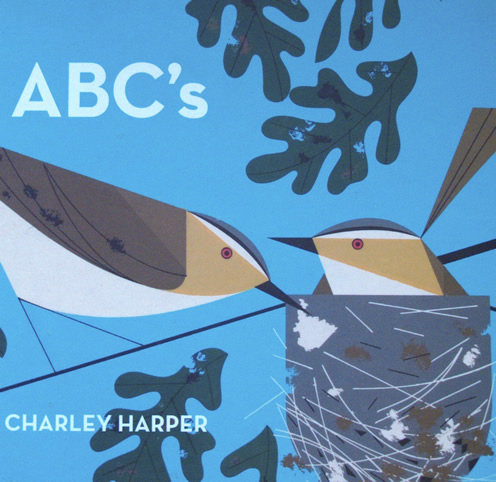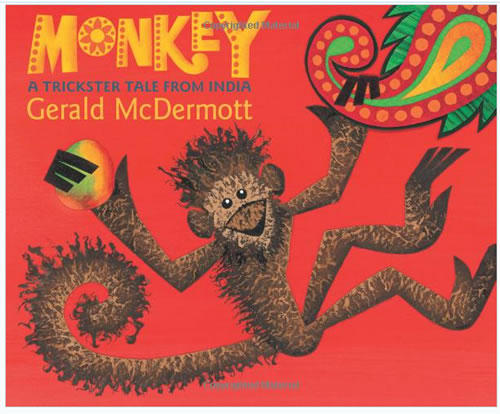Becoming familiar with the works of award-winning picture book illustrators is helpful when you’re looking for ideas and inspiration to create and teach art lessons.
Looking at picture books is a great way to introduce students to art and to inspire them to create their own works of art. Using picture books when you teach art, contributes to a child’s awareness of the elements of art and the principles of design.
Many of the images featured below have a sense of excitement and movement, strong graphic styles, use a variety of line work and bold color combinations.
Developing Art Skills
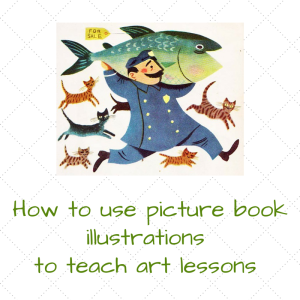
As preschool and kindergarten students are exposed to the work of picture book illustrators they develop:
- their imaginations
- their observation skills
- their awareness of how to play with color, line, shape, and pattern
- their ability to use a variety of materials, technologies, and processes
Presenting children with excellent samples of picture book illustrators’ work helps them to understand how artists create artworks for specific purposes such as telling stories with fiction books or illustrating important ideas in non-fiction books.
Some of my favorite picture book illustrators
Rodger Duvoisin‘s work below is from his book, “The Rain Puddle”. The book has many examples of drawing from various viewpoints, colored with a limited palette of colors, as well as being a delightful read. You may have to search for it as it is now out of print. For illustrations like this one, show the students how the animals’ feet are pointing out from their bodies to depict movement.
Children can try filling a page with animals with their legs poking out the sides instead of the drawn in the traditional way. Suggest they pick only 3 colors to fill in their picture.
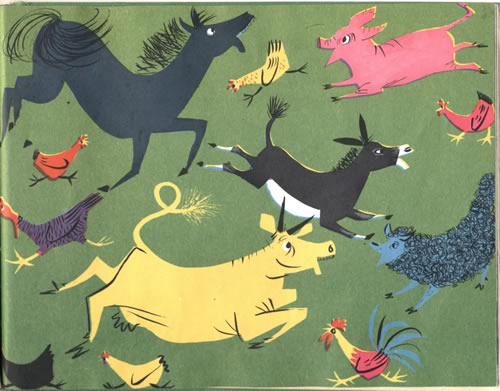
Abner Graboff worked as an illustrator through the 50’s and 60’s in America and produced outstanding picture book. If you can find any of his books, they are a super resource for teaching art lessons. The illustration below is from a book called, “Mr. Angelo”, and shows his brilliant use of strong colors and shapes.
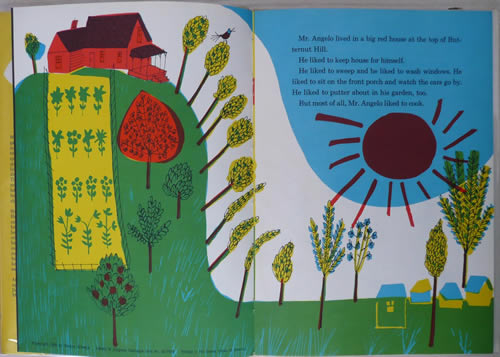
Point out how the artist created three bold, curved shapes in this image. Students could make a similar picture with three big shapes and then add details by cutting a house, tree, and other shapes out of colored papers. Finish the picture with a few felt marker details.
Joseph Low, another picture book illustrator from an earlier era, developed his artistic style in response to what he considered “deadly dull,” art instruction. His work is great for teaching kids about using bold or scribbled lines with varying thicknesses and using rich colors. This is from his book “Aesop Fables”. Although Joseph Low books are also hard to find, some of his other books are still available on Amazon.
A fun lesson for this image would be to paint a background of bright colors, then when dry, draw on top of the paper with black felt markers of varying sizes.
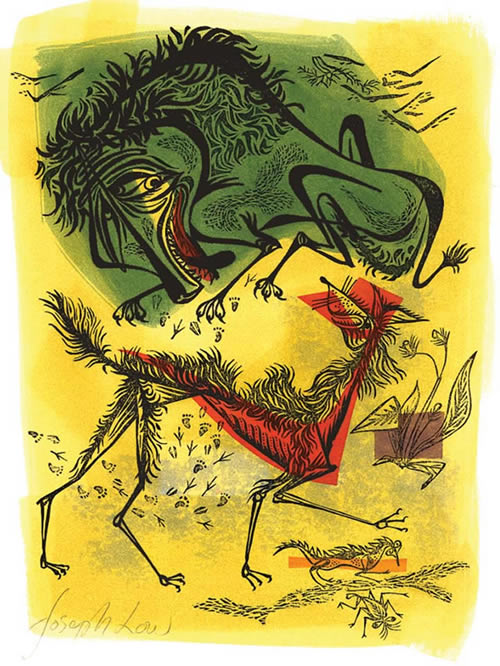
Gerald McDermott‘s books are illustrated with bright color, stylized figures, and abstract motifs. The illustration in the book below is a good example of using textures in art.
Have students experiment with making rubbings on large papers, using the sides of brightly colored oil pastels (easier for little kids) or crayons, and interesting textures such as plastic onion bags, pieces of netting, bubble wrap and/or corrugated cardboard.
Then cut the finished rubbing papers in four for all children to choose from to make their own collages. The students use the rubbings papers to cut out their own animal shapes, then glue them on colorful paper backgrounds.
William Steig is best known for his book, “Shrek”, but he illustrated many other books, as well as covers and cartoons for, “The New Yorker” magazine. His work is ideal for inspiring line illustrations which are later colored. In his later work, his use of line is even looser and more expressive.
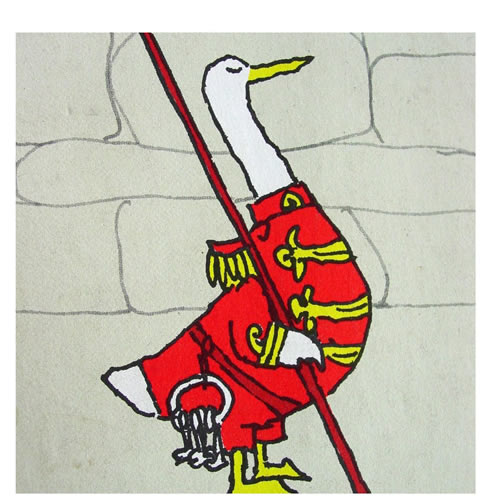
William Steig inspires children to be big and bold and loose with their drawings. Felt markers run when they get wet, so have students draw first with black felts on large sheets of paper and then fill in after with bright-colored crayons.
Many books by Charley Harper are available today. He combined textures, shapes, colors and patterns to create bold and appealing images. Charley Harper loved nature and using his picture books would integrate nicely with environmental science activities.
After reading books by this picture book illustrator, have students create animal shapes by first gluing large precut ovals, triangles, and other shapes to a colored paper, then building texture and pattern with smaller shapes they cut out by themselves.
